Insider: Why IndyCar's unexpected growth brings problems with its promise
For all the progress Roger Penske’s two-year tenure atop IndyCar has brought – $20 million of investment into Indianapolis Motor Speedway infrastructure, a groundbreaking TV deal, a series title sponsor extension and stability through 18 months of COVID-19 pandemic restrictions – Penske Entertainment Corp. officials face a number of intertwined issues that will define the series’ future.
Their source?
Unintended, unpredicted paddock growth at a time when so much of the country was reeling from the pandemic.
More: 'You've just got to make room': IndyCar grappling with knockout qualifying outside of Indy 500
Last week, IndyCar president Jay Frye confirmed that series officials expect 26 or 27 full-time entries for the 2022 season, the most since the end of The Split in 2008. In the years that followed, the series maintained a steady 24-25 full-time field until 2013, when, at times, the car count threatened to dip below 20.
In the 25 months since Penske purchased the series from the Hulman-George family, IndyCar has grown from 21 full-time cars in 2019 to 23 (2020) to, 24 (2021) and now a tentative 25 this winter with one or two deals yet to be finalized. Aside from possible expansions from A.J. Foyt Racing and Juncos Hollinger Racing (or a continued presence from Carlin), Arrow McLaren SP has said it will enter a third full-time car come 2023, while Vasser Sullivan Racing, Paretta Autosport, Top Gun Racing, Cusick Motorsports and Marotti Autosport sit various lengths away from the full-time IndyCar club.
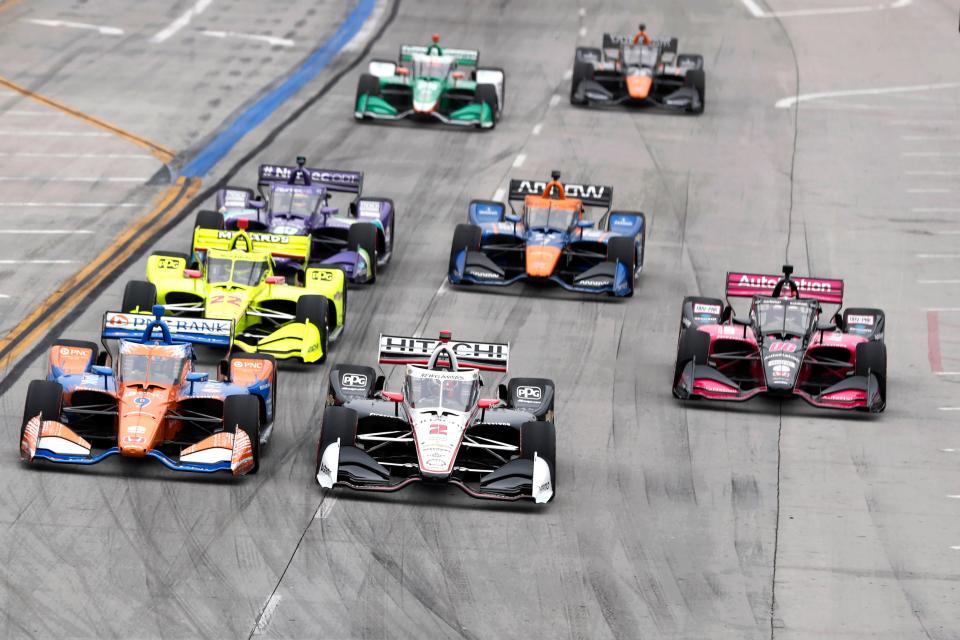
"Right now you've got one hand tied behind your back (because of the pandemic)," McLaren Racing CEO Zak Brown said in an August news conference in Nashville. "Imagine what (the growth) can do when we can take the masks off."
The growth comes when Honda, one of the series’ two engine manufacturers, has reached its limit on full-season entries (15). Frye, Penske and Penske Entertainment Corp. president and CEO Mark Miles continue to court a third original equipment manufacturer (OEM) that has been glaringly absent from the sport for nearly a decade and has twice pushed back the release of the new hybrid 2.4-liter twin-turbo V6 engine package now set to be unveiled in 2023. The earliest a new OEM could join is 2024.
But available engine leases may be the least of IndyCar's ‘growth problem.’ Three tracks – Mid-Ohio, Toronto and Laguna Seca – are widely believed to be at (or past) their pitlane space limits for IndyCar’s 2022 field. Two other tracks IndyStar spoke to for this story -- Nashville and Long Beach -- stand precariously close to their limits. Meanwhile, just weeks ago, IndyCar debuted a job application portal that officials hope will address an already shrinking work force.
Insider: Here's a look at the potential 2022 Indy 500 field six months from race day
Will the developments of the past two years – and beyond – push IndyCar to revisit CART’s ‘'knockout qualifying’' format? Will certain tracks be forced to invest tens of thousands of dollars in infrastructure updates or run the risk of dropping off the schedule? Will IndyCar have to find an equitable way to cap its full-time entry list, while somehow continuing to encourage the necessary growth to fill the field at the Indianapolis 500? Will it continue to ask more of its current engine partners as an evasive third proves tough to land?
These questions and more bear down on IndyCar’s power brokers as the bulk of the paddock meets in Indianapolis this week for series-wide offseason meetings to introduce possible solutions to issues stemming from the paddock’s recent expansion. IndyStar spoke with more than two dozen members of the paddock to dissect the series’ issues deemed countless times as “a good problem to have.”
“Growth is good, but it can be a bit of a dagger sometimes,” veteran driver Graham Rahal said. “Where is this coming from? It’s so strange, and I can’t answer it.”
Added hopeful full-time IndyCar team owner Beth Paretta: “Be careful what you wish for. I think we all want this sport to grow, but I guess the question becomes, ‘What does that mean? And in what way?’”
Why is IndyCar growing?
Not long after IndyCar promoted Frye to the series’ president of competition in late 2015, the longtime motorsports veteran created what for years he’s referenced as IndyCar’s ‘Five-Year Plan.’ It’s a living organism of change, rather than a single five-year roadmap. Five years after its creation, he continues to reference it while looking forward. The implementation of its cornerstone, IndyCar’s next iteration of engine and chassis packages, may not be fully installed for five years or more.
The need for growth in both entries and teams, which Frye espoused at the time, on other hand, has clearly been accomplished.
More on IndyCar's future:
IndyCar faces uncertain oval future as tracks struggle financially, fans call for more
Mark Miles: Penske's purchase saved IndyCar, IMS from a 'challenging' future
Insider: With NBC betting on IndyCar, series prepares for future
IndyCar bumps hybrid engine plan to '23, reaches extensions with Honda, Chevy
Pros and cons for IndyCar's 2022 schedule with 14 races on NBC
“It’s funny. I think our manufacturer partners think we’re too healthy, because we’re growing too quickly,” Frye said at the series’ end-of-the-year banquet. “But we certainly appreciate and understand what they’re doing. It’s very taxing and massive efforts.”
At the start of 2017, IndyCar giants Andretti Autosport, Team Penske and Chip Ganassi Racing accounted for more than half (12) of the series’ 21 full-time entries. The trio will run one fewer (11) in 2022. But rather than fill nearly 60% of the full-time grid, the trio could represent as little as 40%.
“You kind of need the numbers just to defend yourself (against the bigger teams),” Bobby Rahal, co-owner of Rahal Letterman Lanigan Racing, said of his effort to increase his team's full-time entries.
In 2017, Meyer Shank Racing (then Michael Shank Racing) was an Indy 500-only entry with series rookie Jack Harvey, while Ricardo Juncos’ namesake team made its own debut on the IMS oval with a two-car effort. RLL, with the younger Rahal manning its one full-time car, was finally running competitively consistently after nearly a decade of bouncing between a two-car, one-car and 500-only effort.
Together, those three teams have essentially accounted for IndyCar’s full-time entry growth over the past five seasons. Combining for just one full-time car in ’17, the trio will account for at least six when IndyCar has its 2022 season-opener in St. Pete. Along the way, fans have seen the arrival and departure of DragonSpeed and Harding Racing, which debuted in 2017 and was eventually absorbed into Andretti (via what’s now Andretti Steinbrenner Autosport). The future of Carlin, whose 2018 IndyCar debut featured two full-time teams before dropping down to one in 2020, is also unclear.
Shank, Juncos and RLL have represented precisely the type of growth you would hope the sale to Penske, combined with a 14-race broadcast TV deal and increased sponsorship around the paddock, would bring.
“You need those Ricardo Juncos and Mike Shank and Carlin-type guys with these newer teams wanting to play ball in this sport,” the younger Rahal said. “You don’t want to limit that.”
People want to be part of IndyCar. That, however, creates a problem, even if it is a "good" problem.

Can some tracks handle more cars?
The younger Rahal typically considers himself a glass-half-full type of visionary. But inside an RLL transporter during his down time between Practice No. 2 and qualifying at Laguna Seca in September, the driver of the No. 15 Honda was edging toward exasperated. Conflicted, too, as someone not fond of unloading his problems without solutions.
“You can’t, and I don’t like that word, but I will use it,” he said. “You cannot fit any more (cars) than what we had this year at (Laguna Seca and Mid-Ohio). And Toronto? I don’t know how they can even fit what we’ve had this year. I literally don’t know how.
“You just cannot continue to have growth and growth and growth (at these tracks).”
The sentiment was sounded virtually across-the-board among paddock members IndyStar spoke to.
The issue was glaring when the paddock visited the heavily-dated Lexington, Ohio, racetrack for July 4 weekend this past summer. Teams were housed in wooden garages that some joked appeared to not have been updated since CART first visited in 1980. A 26-car grid was shoehorned into pitlane. It represented the most Indy cars the track had hosted in a decade.
In addition, given its placement in the back-half of the 2022 schedule, Mid-Ohio represents an ideal race for teams such as AMSP and others to run part-time cars ahead of planned future expansion. It’s not immediately clear whether the track will be able to host all who wish to race there in July for its 40th IndyCar race.
“We can’t make those boxes any smaller, or you won’t be able to get in,” said Alexander Rossi on a fall episode of ‘Off-Track with Hinch and Rossi’, a podcast he hosts with fellow IndyCar driver James Hinchcliffe and friend Tim Durham. “I don’t know how you deal with certain situations without having bumping.”
The real estate issue is only more dire on the streets of Toronto, where IndyCar is preparing to return to this July for the first time since 2019 due to the pandemic. The track’s most recent configuration shifted pitlane between Turns 9-11 to accommodate hotel construction in 2016, restricting an already tight space. Since then, its held only as many as 23 cars. The track hasn’t hosted more than 26 since the turn of the century.
Some paddock members have suggested IndyCar should extend pitlane further down Prince’s Boulevard toward the start-finish line, though it’s unclear whether that is a viable option. Kim Green and Kevin Savoree, co-owners of Green Savoree Racing Promotions which operates four annual IndyCar events including Mid-Ohio and Toronto, declined to comment for this story.
“There aren’t 28 pit stalls (at Toronto),” Hinchcliffe said recently on ‘Off-Track.’ “You’ll have to qualify (to make) that race. I’m almost certain of it.”
Added Don Cusick, who partnered to enter Stefan Wilson in last May’s Indy 500 with an eye at creating a full-time program down the road: “Not every track has a Roger Penske to fix it up.”
More on Roger Penske:
Penske on COVID-19: 'No matter how bad it seems, everything's an opportunity'
'When I think of Roger...': Behind the scenes stories of Roger Penske
Penske discusses Kyle Larson at 500, ovals, F1 at IMS, Indy Lights and more
Forbes says Penske's net worth has close to tripled since onset of pandemic
'Relentless pursuit of excellence': What Penske is like as a boss
Circumstances may not be quite as dire at Laguna Seca. Last month a track official told IndyStar its owners were seeking funding for an overhaul that would include a reconfiguration of pitlane. That funding request may be approved as soon as this week, but until that takes place, IndyCar’s preferred season-finale destination doesn’t appear to have room for the typical extra entries teams expanding down the road typically bring.
Music City Grand Prix president Chris Parker told IndyStar this fall that IndyCar’s newest track filled its max number of pitlane spots in Year 1. “That’s not to say we couldn’t (make more space), but it’s not what we’re set up for beyond today,” he said. Long Beach could expand beyond the 28 it hosted in September, track CEO Jim Michaelian told IndyStar, but its increasingly tight pitlane is further complicated by sharing the track with IMSA, a series also tracking toward massive growth.
More: Music City Grand Prix set for largest non-Indy 500 grid since at least 2013
In all, the future of five IndyCar tracks – four of which the series has visited annually with little-to-no interruption since the '80s – seem unclear at best. It’s at a time when officials have consistently run into road blocks in adding ovals to the schedule, and the only road-and-street options the series doesn’t already race at include a recent failed experiment (Watkins Glen), a new Formula 1 street course (Miami) or a future international race IndyCar officials have consistently shied away from committing to (Mexico).
Will there be enough engines for IndyCar's continued growth?
For 2022, it’s the difference between Kyle Kirkwood ending up in a back-half-of-the-field seat at A.J. Foyt Racing vs. one he could contend for wins in at Andretti Autosport. With a couple more IndyCar offseasons of growth, the series’ engine scarcity could become a legitimate barrierfor deserving young driving talents.
Honda is already at it's limit, supporting 15 full-time cars in 2022, with Chevy running at least 10 with multiple consistent part-timers in the back-half of the season likely.
It’s why Andretti, a Honda team, couldn’t sign Kirkwood to a full-season rookie deal as it would have liked when its plan to purchase an F1 team to send Colton Herta to fell through. And it’s one of several factors why Ganassi, also a Honda team, likely can’t run Jimmie Johnson full-time in ’22 and add a fifth oval-only car for Tony Kanaan.
“(Honda and Chevy) signed up with IndyCar on the provision they’d be furnishing 11 full-season entries each,” said Ganassi managing director Mike Hull. “It might not seem like a big deal to someone on the outside when you hear, ‘Oh, Chevy and Honda need to come up with X more engines,’ but that’s raw material, product, process and people.”

Multiple team bosses within the paddock confirmed what has long been assumed about IndyCar’s full-season engine programs – that, at best, Honda and Chevy are roughly breaking even on each one, and they may in fact dip into the red. Though a crucial cog in allowing the series to run and thrive, being an IndyCar OEM isn’t a lucrative role. That, on top of the sheer difficulty of finding additional experts to man a competitive racing engine program, is why Chevy and Honda can’t just prepare additional engines on a team’s whim.
“Essentially, what we pay the OEM doesn’t cover their costs, so every additional entry, they’re losing money,” said Andretti Autosport COO Rob Edwards. “They’re going to turn around and say, ‘This doesn’t make economic sense for us.’ If we’re doing it with just two, at some point, the engine manufacturers are going to say, ‘We need to do something different.’”
This upcoming season would make even less sense for Honda or Chevy to overextend themselves, during the final year of the current engine formula when any engines created from scratch would be thrown into a scrap heap by late September. With what Edwards understands about the new engine package that will debut in 2023, even just running at this level might be hard for Honda and Chevy.
“The new engine’s going to be much more expensive,” he said.
It’s why Frye and others have said landing that third OEM will very, very soon “not be just a luxury. It’ll be a necessity.”
“As much as they want to and can help, (Honda and Chevy are) going to get to a point where they’re tapped out,” Frye said.
In a perfect world, Honda, Chevy, and OEM No. 3 would split the field somewhat evenly, taking on eight or nine full-time programs each, leaving plenty of room for teams to run an extra car for races here and there (track-willing). Teams (and OEMs) would be able to sign the drivers they want in a more open, competitive marketplace.
Each May, it could also mean a return to the good ole days, when 40 or more cars attempted the make the field for the Greatest Spectacle in Racing. Never again will we see 50-plus, but it would be nowhere near as far-fetched to target, say, 42, which would mean 14 cars apiece.
At the moment, Honda Performance Development considers 18 cars for the 500 its max, and it would only be able to field 19 in a pinch. HPD president David Salters declined to speak with IndyStar for this story to provide more context.
At Chevy, the company’s IndyCar engineering program manager Rob Buckner told IndyStar, “If we surpassed 20 (cars for the 500), it would be a pretty big concern, from a quality control perspective with how many part-time people we’d have running cars."
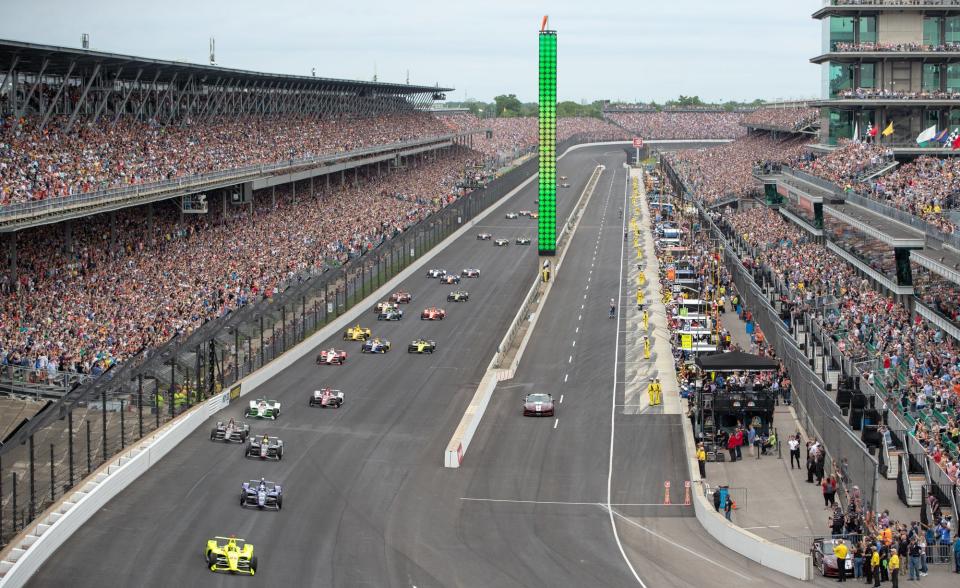
Does IndyCar need a buy-in or charters?
Either issue, shrinking track pitlane space or full-season engine limitations, would be a significant hurdle for IndyCar officials. Together, they likely mean the series must rethink some central principles about how it is run.
IndyCar has generally been a series where anyone, given a driver passing a test and a team acquiring the necessary equipment could race alongside names such as Penske, Andretti, Ganassi, Foyt and Rahal. In a climate of $10 million (or more) NASCAR charters and $200 million F1 team buy-in fees, IndyCar has been perhaps the most welcoming high-level racing series for first-timers.
That ‘gates wide-open’ model doesn’t seem feasible anymore. Below are models IndyCar may have to consider to keep the series from spiraling out of control, while keeping fairness and the financial well-being of its longtime members at the forefront.
A Formula 1-like buy-in
Theoretically, F1 could have an infinite number of cars on the grid. The reason the series, which currently includes 10 two-car teams, has remained a 20-car field for several years is the enormous barrier for entry. For a $200 million payment, a team can start a brand-new program to compete against the fastest, most high-tech cars in the world. Sounds daunting, right?
It’s why, earlier this year, Michael Andretti was targeting a purchase of Alfa Romeo Racing Orlen in order to break into the series. With enough money, he could join whenever he wants, but the financial cost of building a mildly competitive program from scratch would be far, far more. It’s why purchasing the assets of a team near the bottom rung, even if the initial cost is several hundred million dollars more upon entry, is a more successful model long-term.
A $20 million buy-in to join IndyCar would turn away most interested parties. Frankly, $10 million would. But is that what IndyCar aspires to be? It has a field full of potential race winners on any given weekend, and some of Europe’s best talents not currently racing in F1 are just starting to take notice of IndyCar’s value. The series may be motorsports’ rising star, but that's at least partly because it has avoided the stuffiness that a ‘buy-in’ gives off. It says to a prospective team owner, "We don’t much want you here, but we won’t turn down your money."
IndyCar needs to find a way to curtail its growing grids, but this isn’t a proper fit.
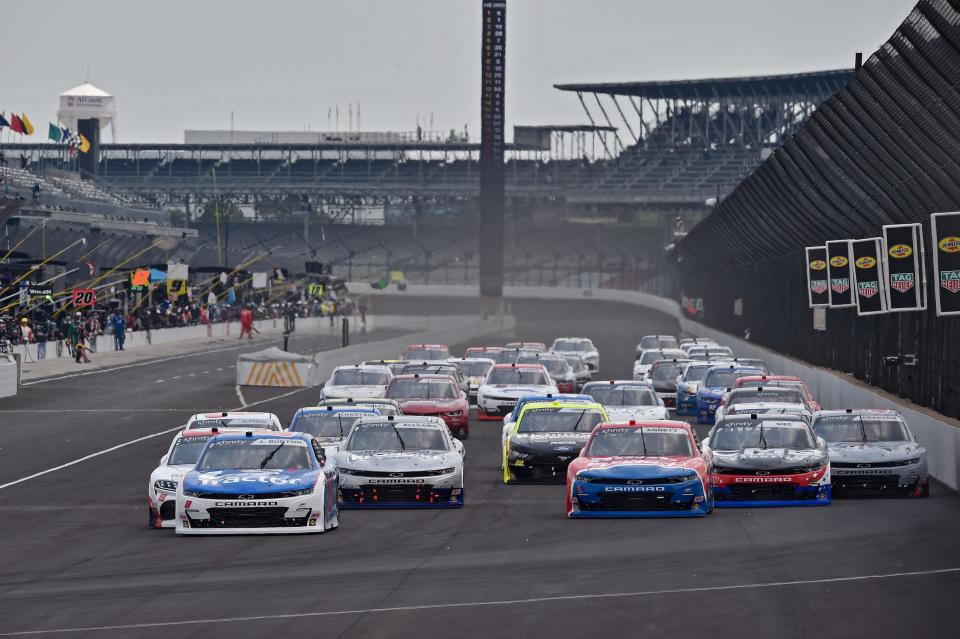
NASCAR's charter model
NASCAR has a hard cap on permanent members set at 36 cars. In early 2016, the sanctioning body unveiled its system that guarantees the holders of its full-season charters, among other things, entry into every points-paying race. Race fields can extend to 40 cars, allowing non-chartered cars to enter any race they wish. But if more than five cars without charters wish to compete in a race, they must qualify for those four remaining spots.
Each team is allowed a maximum of four charters, and each one can be sold outright to a current or new team owner, as well as leased for one year. They’re going for as much as $13.5 million.
It’s unlikely an IndyCar charter would drum up the same value, given NASCAR’s significantly higher TV ratings and a TV deal that delivers higher returns to sponsors and teams. Such a model, though, would solve both the problems stated above.
Given the current tracks and ideal pit box sizes, as well as the current OEM capabilities, the series could determine its ideal maximum number of full-time cars. Whether that number would sit at 24 to account for Toronto’s pitlane or 27-28 to account for those already preparing to expand for 2023 is unclear.
However that number is reached, it would deliver value to the more than a half-dozen long-time series team owners and give newer ones a concrete return on their investment if they determine IndyCar isn’t for them. Rather than suffering significant losses and getting pennies on the dollar selling team equipment, they’d be able to auction the opportunity to compete in such a desirable series to tomorrow’s Paretta, Cusick or Bill Throckmorton.
“Right now, any Tom, Dick and Harry can go run a car, “ Rossi said on a recent episode of ‘Off-Track.’ “IndyCar and all of us need to shift our focus away from numbers and ‘more cars, more cars, more cars.’ We’ve got cars, we’re good. We’ve got plenty of cars. Now, let’s figure out how to monetize it.”
An enhanced Leaders Circle program
A slightly different third model may represent IndyCar’s likely future. With it, IndyCar can deliver more value to the bulk of the paddock while monetizing perhaps its greatest asset: a level of competitiveness not seen in any other series.
For several years, IndyCar has used its Leaders Circle program to support most of its full-time competitors. Presently, IndyCar offers 22 spots on an annual basis to teams that, in the year prior, competed full-time and finished in the top-22 in points. Within those parameters, it also recently instituted a three-car max for teams, meaning a fourth car (aside from Andretti, who was grandfathered in with four Leaders Circle entries) would not be eligible. As a member of IndyCar’s Leaders Circle, teams receive even cuts of what would have been considered “prize money,” amounting to, as of last season, between $900,000 and $1 million per member.
IndyCar's 'underworld': Not clear who is eligible for 2022 Leaders Circle
With Ganassi’s fourth entry, Johnson and Kanaan’s No. 48, ineligible and Team Penske getting rid of its fourth car for 2022, only 22 cars were in the running for the 22 spots this past season. With at least 24 eligible entries competing for the top-22 in points in 2022 (to be paid in 2023), IndyCar has some legitimate competition on its hands. As more full-timers enter the ring, more will also end up with a $1 million hole in their budgets to fill. Outside the Indy 500, prize money for winning or finishing high in IndyCar races in paltry at best. The program prioritizes stability and, with this current growth, essentially not being one of the worst cars on-track.
Operating an entry outside the program means you can expect very little prize money (aside from an outside part-timer like Helio Castroneves winning the 500), and according to Throckmorton, the owner of Top Gun Racing, everything down to tire bills are more expensive.
“I don’t keep score by total number of teams,” Miles said. “For now, I see 22 Leaders Circle teams, and I don’t see that changing.
“To me, it’s more important that the fundamental, or core, teams are there racing all of our races, that they’re healthy and that their economics improve, rather than if we get a 29th or 30th car to race however many races.”
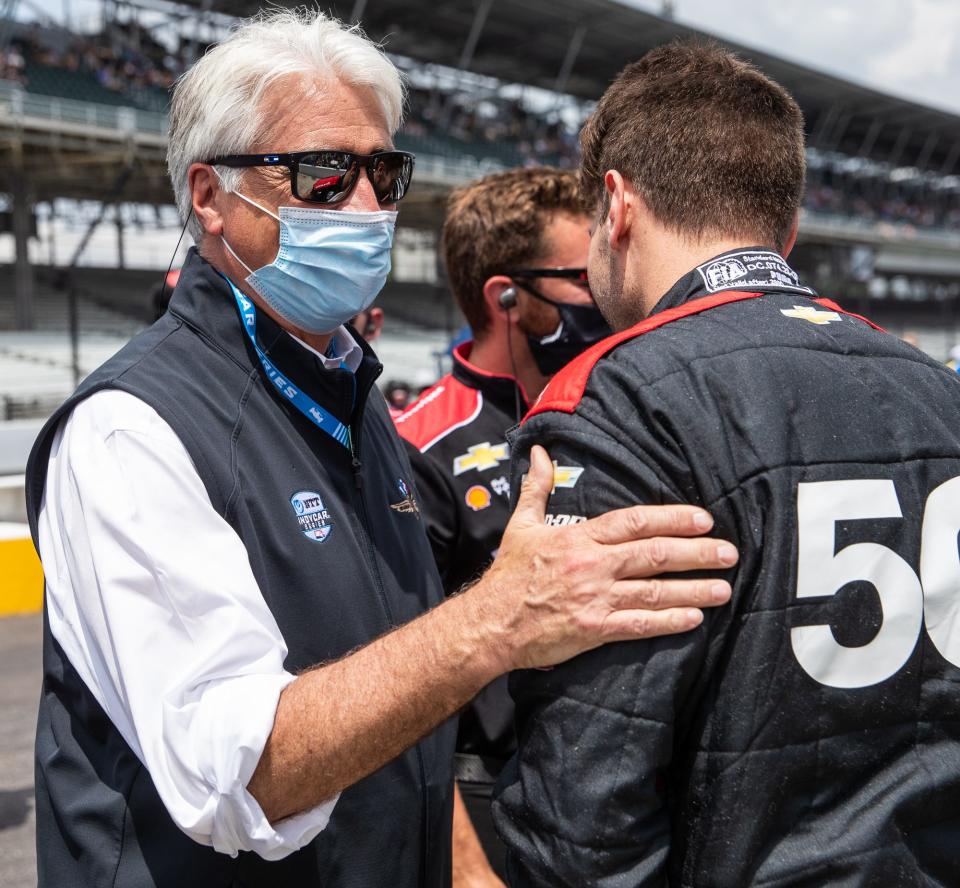
Penske told IndyStar he believed the Leaders Circle served as a NASCAR charter system, but that isn't entirely true. Rather than merely existing when the program was created (like the NASCAR charter system), the Leaders Circle requires a certain level of annual performance. Longtime teams that typically finish in the back would still have an upper-hand over brand-new ones, but some signatures on a piece of paper wouldn’t guarantee them preferential treatment for years to come if they can’t out-perform them.
Additionally, such a system could still operate without an official entry “cap,” meaningprospective team owners wouldn’t have to purchase a charter to run more than just the Indy 500. IndyCar could continue only allowing as many cars to show up for race weekends as there’s room on pitlane. But they could also force teams outside the Leaders Circle, as well as part-timers, to qualify for races with more entrants than pit stalls.
Potential new full-time team owners could still run at most IndyCar tracks while testing the waters, while a team which might have lost out on a previous Leaders Circle spot could still run a full season with the hope of requalifying. But lose too often and it adds a financial strain, pushing owners out of the sport.
“For the smaller teams, this is all a little precarious,” said A.J. Foyt Racing president Larry Foyt.
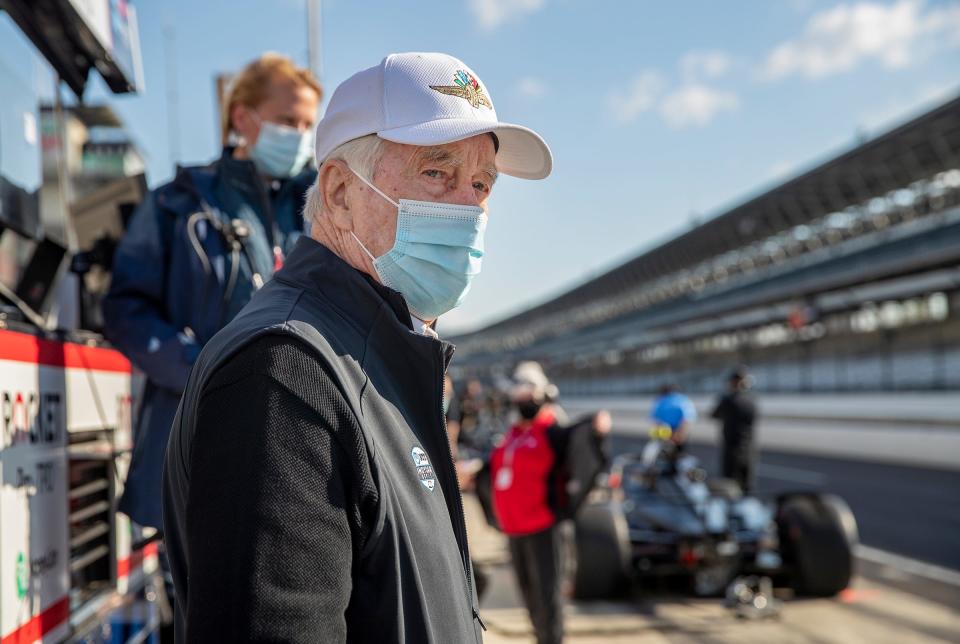
No perfect answer to this 'good problem'
What’s certain is that the series can’t do right by all. Keeping the Leaders Circle model takes funding deserved by those who consistently finish in the top-5 and funnels it down to members who rank outside the top-15. With a simple purse payout for every race, the best cars would win the most money, and with as competitive a series as IndyCar is today, that would still enrich a large chunk of the paddock.
But it also ignores that, despite all this new energy around the sport, it’s still not always easy for teams missing just a couple tenths-of-a-second per lap to cobble together $7 million every year to run a car. Such a model also makes it tougher for team owners on the rise to break into IndyCar. They’ve got to beat out both the veteran teams currently down on their luck, as well as at least one current Leaders Circle car, to earn a spot for the following year.
“Look at most of the team owners, and they’re not young people,” Graham Rahal said, “You have to be careful, because we need Juncos. We need Shank. Where’s the next generation of all these teams? One of us is going to have to step up and carry them on, and you don’t want to make it so that’s unreachable.”
Added Hull: “What’s screwed up some forms of racing in the past is when they’ve created barriers for new teams to feel like they can participate on an equal basis.”
To do nothing means running the risk of outgrowing several current road and street tracks at a time when there aren’t many other options. And down the line, your current engine partners, without the addition of a third, may institute their own entry caps or find IndyCar doesn’t make monetary sense anymore.
What Hull, who’s been with Ganassi since its early-'90s infancy, sees more than knockout qualifying and charters and the Leaders Circle is a need for communication and collaboration. At the start of the pandemic, IndyCar instituted a weekly call with team owners and managers to make certain everyone was on the same page for rapidly-changing protocols and race schedules. Even with those worries now largely in the past, that frequent communication has remained.
For IndyCar not to bungle its own success, he said, Penske, Miles, Frye and others must embrace the ‘togetherness’ that allowed the professional sports franchise with a relatively small footprint to not only survive but thrive during what could have brought on disaster.
“We need to have professional forecasters running the series, so all this growth is stimulated,” he said. “We rely on the leadership at IndyCar to be able to see things ahead of time and make the changes required so there’s a smooth transition as that change creates a better place to race.
“It isn’t just pitlane. It’s the garage area, the hospitality area, the crew members and where they park their cars. You can do down the list of all the things we need to tune up, and when you grow, and people are willing to accept change and act on it, it can create an atmosphere that represents the IndyCar brand.”
Email IndyStar motor sports reporter Nathan Brown at nlbrown@gannett.com. Follow him on Twitter: @By_NathanBrown.
This article originally appeared on Indianapolis Star: IndyCar faces unpredicted paddock growth. Why that's a problem
